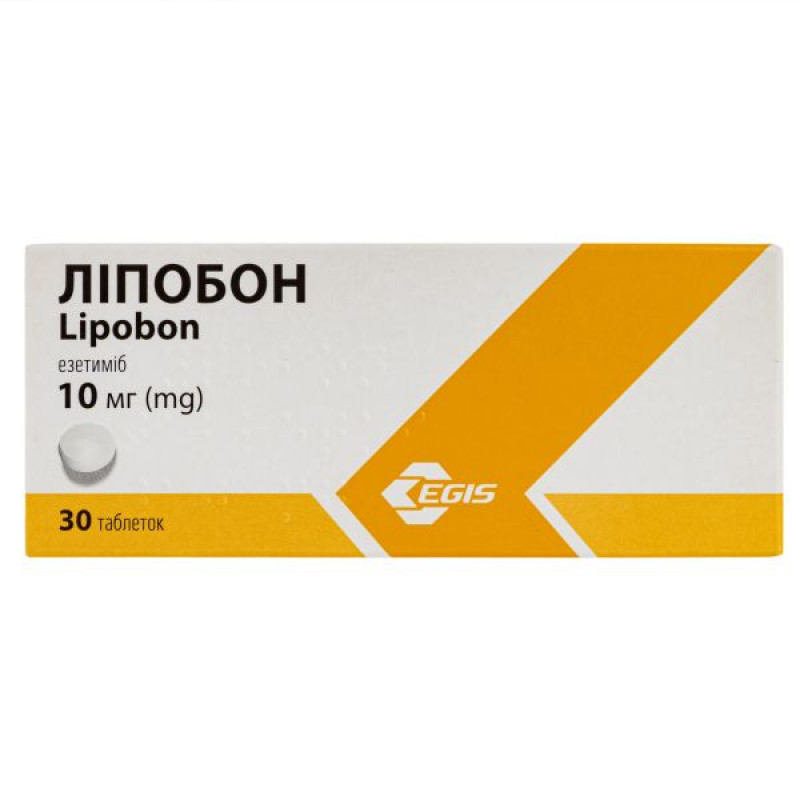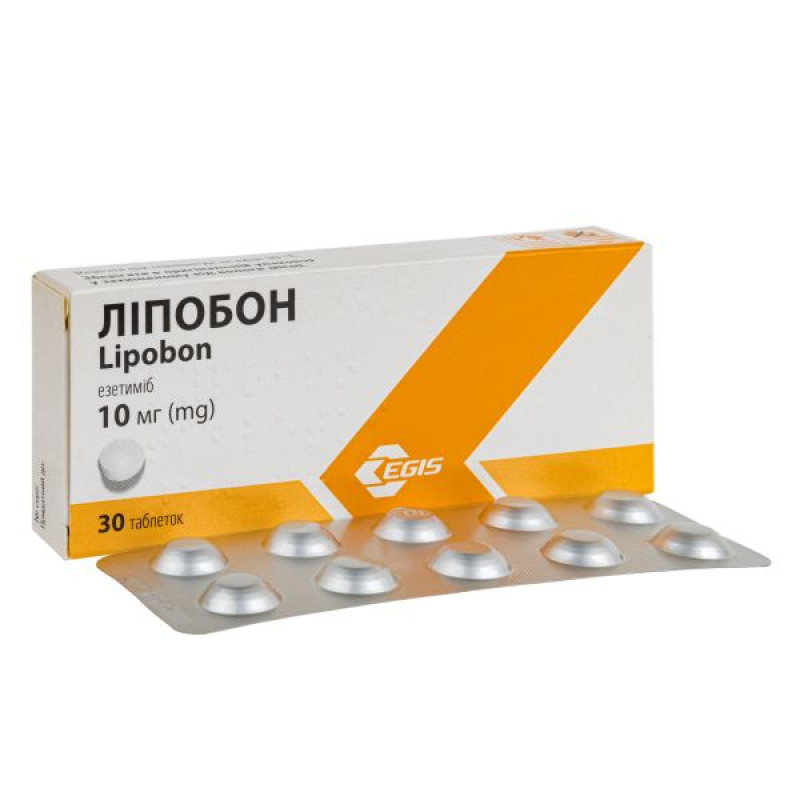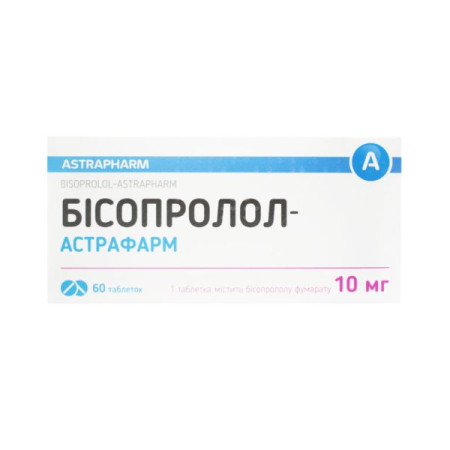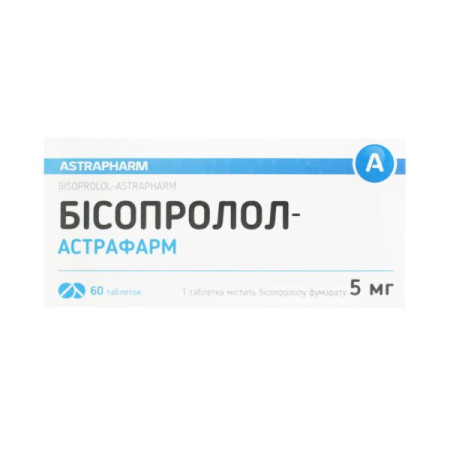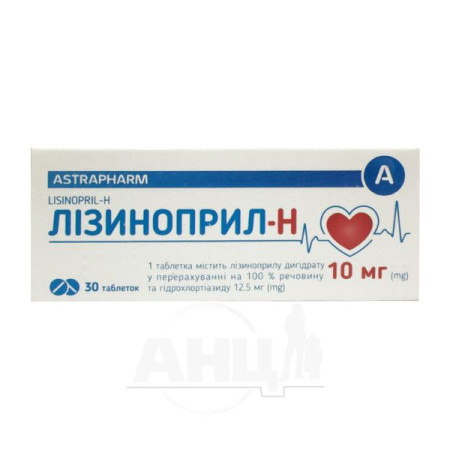Lipobon tablets 10 mg No. 30
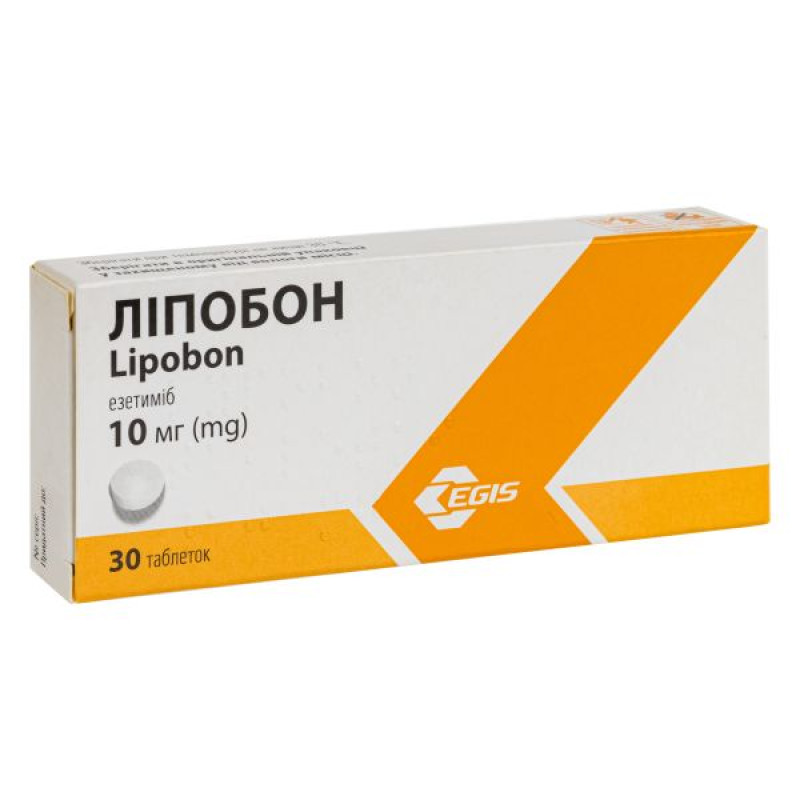
Instructions for Lipobon tablets 10 mg No. 30
Composition
active ingredient: ezetimibe;
1 tablet contains ezetimibe 10 mg;
Excipients: microcrystalline cellulose, mannitol, croscarmellose sodium, low-substituted hydroxypropylcellulose, povidone-K25, sodium lauryl sulfate, magnesium stearate.
Dosage form
Pills.
Main physicochemical properties: white or almost white oblong tablets with the code "E 611" on one side and without any engravings on the other side.
Pharmacotherapeutic group
Other lipid-modifying agents. ATX code C10A X09.
Pharmacological properties
Pharmacodynamics.
Mechanism of action
Ezetimibe is a member of a new class of lipid-lowering agents that selectively inhibit the intestinal absorption of cholesterol and related plant sterols. Ezetimibe is orally active and has a mechanism of action that is distinct from other classes of cholesterol-lowering drugs (e.g., statins, bile acid sequestrants (resins), acid-derived fibrates, and plant stanols). The molecular target of ezetimibe is the sterol transporter Niemann-Pick Cl-Like 1 (NPC1L1), which is responsible for the absorption of cholesterol and phytosterols in the intestine.
Ezetimibe localizes to the brush border of the small intestine and inhibits cholesterol absorption by reducing the delivery of intestinal cholesterol to the liver; statins reduce cholesterol synthesis in the liver, and together these mechanisms provide additional cholesterol reduction. After two weeks of clinical use in 18 patients with hypercholesterolemia, ezetimibe reduced cholesterol absorption by 54% compared with placebo.
Pharmacodynamic effects
A series of preclinical studies were conducted to determine the selectivity of ezetimibe for inhibiting cholesterol absorption. Ezetimibe inhibited the absorption of [14C]-cholesterol without affecting the absorption of triglycerides, fatty acids, bile acids, progesterone, ethinyl estradiol, or the fat-soluble vitamins A and D.
Epidemiological studies have established that cardiovascular morbidity and mortality vary directly with the level of total cholesterol and LDL-C and inversely with the level of HDL-C.
The use of ezetimibe with a statin effectively reduces the risk of cardiovascular events in patients with coronary heart disease and a history of acute coronary syndrome (ACS).
Clinical efficacy and safety
In controlled clinical trials, ezetimibe, as monotherapy and in combination with a statin, significantly reduced total cholesterol (total-C), low-density lipoprotein cholesterol (LDL-C), apolipoprotein B (Apo-B), and triglycerides (TG) and increased high-density lipoprotein cholesterol (HDL-C) in patients with hypercholesterolemia.
Primary hypercholesterolemia
In a double-blind, placebo-controlled, 8-week study, 769 hypercholesterolemic patients already receiving statin monotherapy and not meeting the National Cholesterol Education Program (NCEP) LDL-C goal (2.6 to 4.1 mmol/L [100 to 160 mg/dL], depending on baseline characteristics) were randomized to receive ezetimibe 10 mg or placebo, in addition to their current statin therapy.
Among patients receiving statins who were not at LDL-C goal at baseline (82%), significantly more patients randomized to ezetimibe achieved LDL-C goal at the study endpoint compared with patients randomized to placebo, 72% and 19%, respectively. The corresponding reductions in LDL-C were significantly different (25% and 4% for ezetimibe versus placebo, respectively). In addition, ezetimibe added to current statin therapy significantly reduced total-C, Apo-B, and TG, and increased LDL-C compared with placebo. Ezetimibe or placebo added to statin therapy reduced mean C-reactive protein by 10% or 0% from baseline, respectively.
In a multicenter, double-blind, controlled clinical trial (ENHANCE), 720 patients with heterozygous familial hypercholesterolemia were randomized to receive ezetimibe 10 mg in combination with simvastatin 80 mg (n = 357) or simvastatin 80 mg (n = 363) for 2 years. The primary objective of the study was to examine the effect of ezetimibe/simvastatin combination therapy on carotid intima-media thickness (IMT) compared with simvastatin monotherapy. The impact of this surrogate marker on cardiovascular morbidity and mortality has not yet been demonstrated. The primary endpoint, change in mean IMT of all six carotid artery segments, was not significantly different (p = 0.29) between the two treatment groups, as determined by B-mode ultrasound. When ezetimibe 10 mg was used in combination with simvastatin 80 mg or simvastatin 80 mg alone, intima-media thickness increased by 0.0111 mm and 0.0058 mm, respectively, over the two-year study (baseline carotid IMT thickness was 0.68 mm and 0.69 mm, respectively).
Ezetimibe 10 mg in combination with simvastatin 80 mg reduced LDL-C, total-C, Apo-B, and TG levels significantly more than simvastatin 80 mg. The percentage increase in HDL-C was similar between the two treatment groups. Adverse reactions reported with ezetimibe 10 mg in combination with simvastatin 80 mg were consistent with its known safety profile.
Children
In a multicenter, double-blind, controlled trial, 138 patients (59 boys and 79 girls) aged 6 to 10 years (mean age 8.3 years) with heterozygous familial or nonfamilial hypercholesterolemia (HeFH) with baseline LDL-C levels between 3.74 and 9.92 mmol/L were randomized to receive ezetimibe 10 mg or placebo for 12 weeks.
At week 12, ezetimibe significantly reduced total cholesterol (-21% vs. 0%), LDL-cholesterol (-28% vs. -1%), Apo-B (-22% vs. -1%), and HDL-cholesterol (-26% vs. 0%) compared with placebo. Results for the two treatment groups were similar for TG and HDL-cholesterol (-6% vs. +8% and +2% vs. +1%, respectively).
In a multicenter, double-blind, controlled trial, 142 boys (Tanner stage II or higher) and 106 postmenarcheal girls aged 10 to 17 years (mean age 14.2 years) with heterozygous familial hypercholesterolemia (HeFH) with baseline LDL-C levels between 4.1 and 10.4 mmol/L were randomized to receive ezetimibe 10 mg concomitantly with simvastatin (10, 20, or 40 mg) or simvastatin alone (10, 20, or 40 mg) for 6 weeks, concomitantly with ezetimibe and 40 mg simvastatin or simvastatin alone for the next 27 weeks, followed by open-label concomitant ezetimibe and simvastatin (10 mg, 20 mg, or 40 mg) for 20 weeks.
At week 6, ezetimibe with concomitant simvastatin (all doses) significantly reduced total-C (38% vs. 26%), LDL-C (49% vs. 34%), Apo-B (39% vs. 27%), and HDL-C (47% vs. 33%) compared with simvastatin monotherapy (all doses). Results for the two treatment groups were similar for TG and HDL-C (-17% vs. -12% and +7% vs. +6%, respectively). At week 33, results were consistent with those at week 6, and significantly more patients receiving ezetimibe plus 40 mg simvastatin (62%) achieved the ideal NCEP AAP goal (<2.8 mmol/L [110 mg/dL]) for LDL-C compared with those receiving 40 mg simvastatin (25%). At week 53, at the end of the open-label extension study, the effect on lipid parameters was maintained.
The safety and efficacy of ezetimibe administered in combination with simvastatin at doses greater than 40 mg/day in children aged 10 to 17 years have not been studied. The safety and efficacy of ezetimibe administered in combination with simvastatin in children aged less than 10 years have not been studied. The long-term efficacy of ezetimibe therapy in patients aged less than 17 years in reducing morbidity and mortality in adulthood has not been studied.
Prevention of cardiovascular events
Improved Outcome Reduction: The International Vytorin Efficacy Study (IMPROVE-IT) is a multicenter, randomized, double-blind, active-controlled trial of 18,144 patients who were enrolled within 10 days of hospitalization for an acute coronary syndrome (ACS, acute myocardial infarction [MI], or unstable angina [UA]). At the time of ACS, patients had LDL-C ≤ 125 mg/dL (≤ 3.2 mmol/L) if they were not receiving lipid-lowering therapy or ≤ 100 mg/dL (≤ 2.6 mmol/L) if they were receiving lipid-lowering therapy. All patients were randomized 1:1 to receive either ezetimibe/simvastatin 10/40 mg (n = 9067) or simvastatin 40 mg (n = 9077) and were followed for a median of 6 years.
The primary endpoint was a composite of cardiovascular death, acute coronary syndrome (ACS, defined as nonfatal myocardial infarction, documented unstable angina requiring hospitalization, or any coronary revascularization procedure occurring at least 30 days after randomization), and nonfatal stroke. The study showed that ezetimibe added to simvastatin provided a progressive advantage in reducing the primary composite of cardiovascular death, ACS, and nonfatal stroke compared with simvastatin (relative risk reduction of 6.4%, p = 0.016). The primary endpoint was observed in 2572 of 9067 patients (7-year Kaplan-Meier [KM] rate 32.72%) in the ezetimibe/simvastatin group and 2742 of 9077 patients (7-year KM rate 34.67%) in the simvastatin group (see Figure 1 and Table 1). This additional benefit is expected to be similar to that of concomitant administration of other statins, which have been shown to be effective in reducing the risk of cardiovascular events. All-cause mortality was not affected in this high-risk group (see Table 1).
There was an overall benefit for all strokes; however, there was a small nonsignificant increase in hemorrhagic stroke in the ezetimibe-simvastatin group compared with simvastatin (see Table 1). The risk of hemorrhagic stroke with ezetimibe plus highly active statins has not been evaluated in long-term outcome studies.
The treatment effect of ezetimibe/simvastatin was generally consistent with the overall results across multiple subgroups, including gender, age, race, history of diabetes, baseline lipid levels, prior statin therapy, prior stroke, and hypertension.
Fig. 1. Effect of ezetimibe/simvastatin on the primary composite endpoint of cardiovascular death, acute coronary syndrome, and nonfatal stroke.
Major cardiovascular events by treatment group in all randomized patients in the IMPROVE-IT trial.
Table 1.
| Result | Ezetimibe/simvastatin 10/40 mga (N = 9067) | Simvastatin 40 mgb (N = 9077) | Risk ratio (95% CI) |
| ||
| n | KM % c | n | KM % c | |||
| Primary composite endpoint | ||||||
| (fatal outcome due to cardiovascular pathology, acute coronary syndrome and non-fatal stroke) | 2572 | 32.72% | 2742 | 34.67% | 0.936 (0.887, 0.988) | 0.016 |
| Secondary composite endpoints | ||||||
| Fatal outcome due to coronary heart disease (CHD), non-fatal myocardial infarction (MI), urgent coronary revascularization after 30 days | 1322 | 17.52% | 1448 | 18.88% | 0.912 (0.847, 0.983) | 0.016 |
| ACS, non-fatal stroke, fatal outcome (all causes) | 3089 | 38.65% | 3246 | 40.25% | 0.948 (0.903, 0.996) | 0.035 |
| Fatal outcome due to cardiovascular disease, non-fatal MI, unstable angina requiring hospitalization, any revascularization, non-fatal stroke | 2716 | 34.49% | 2869 | 36.20% | 0.945 (0.897, 0.996) | 0.035 |
| Components of the primary composite endpoint and selected efficacy endpoints (first occurrences of the specified event at any time) | ||||||
| Fatal outcome due to cardiovascular disease | 537 | 6.89% | 538 | 6.84% | 1,000 (0.887, 1.127) | 0.997 |
| Acute coronary syndrome: | ||||||
| Non-fatal MI | 945 | 12.77% | 1083 | 14.41% | 0.871 (0.798, 0.950) | 0.002 |
| Unstable angina that required hospitalization | 156 | 2.06% | 148 | 1.92% | 1.059 (0.846, 1.326) | 0.618 |
| Urgent coronary revascularization after 30 days | 1690 | 21.84% | 1793 | 23.36% | 0.947 (0.886, 1.012) | 0.107 |
| Non-fatal stroke | 245 | 3.49% | 305 | 4.24% | 0.802 (0.678, 0.949) | 0.010 |
| All MI (fatal and non-fatal) | 977 | 13.13% | 1118 | 14.82% | 0.872 (0.800, 0.950) | 0.002 |
| All strokes (fatal and non-fatal) | 296 | 4.16% | 345 | 4.77% | 0.857 (0.734, 1.001) | 0.052 |
| Non-hemorrhagic stroked | 242 | 3.48% | 305 | 4.23% | 0.793 (0.670, 0.939) | 0.007 |
| Hemorrhagic stroke | 59 | 0.77% | 43 | 0.59% | 1.377 (0.930, 2.040) | 0.110 |
| Fatal outcome from any cause | 1215 | 15.36% | 1231 | 15.28% | 0.989 (0.914, 1.070) | 0.782 |
a 6% of patients had their dose of ezetimibe/simvastatin increased to 10/80 mg.
a 27% of patients had their simvastatin dose increased to 80 mg.
c 7-year rate based on Kaplan-Meier method.
d includes ischemic stroke or stroke of unspecified type.
The Study of Heart and Renal Protection (SHARP) was a multinational, randomized, placebo-controlled, double-blind trial of 9438 patients with chronic kidney disease, one-third of whom were on dialysis at baseline. A total of 4650 patients were assigned to a fixed-dose combination of ezetimibe 10 mg and simvastatin 20 mg and 4620 to placebo; patients were followed for a mean of 4.9 years. The mean age of patients was 62 years; 63% were male; 72% were Caucasian; 23% had diabetes; and for those not on dialysis, the mean estimated glomerular filtration rate (GFR) was 26.5 mL/min/1.73 m2. There were no lipid inclusion criteria. The mean baseline LDL-C was 108 mg/dL. After one year, including patients who were no longer taking study medication, LDL-C was reduced by 26% with simvastatin 20 mg monotherapy and by 38% with ezetimibe 10 mg in combination with simvastatin 20 mg compared with placebo.
The primary comparison, as defined in the SHARP protocol, was an analysis according to the initial treatment assignment of “major vascular events” (MAEs, defined as nonfatal MI or cardiac arrest, stroke, or any revascularization procedure) only in those patients who were initially randomized to ezetimibe plus simvastatin (n = 4193) or placebo (n = 4191). Secondary analyses included a similar combination analyzed for the entire cohort randomized (at baseline or 1 year) to ezetimibe plus simvastatin (n = 4650) or placebo (n = 4620), as well as the components of this combination. The primary endpoint analysis showed that ezetimibe in combination with simvastatin significantly reduced the risk of vascular events (749 patients with events in the placebo group and 639 in the ezetimibe plus simvastatin group) with a relative risk reduction of 16% (p = 0.001). However, this study design did not allow the individual contribution of ezetimibe alone to the efficacy to significantly reduce the risk of vascular events in patients with CKD. The individual components of the OSP in all randomized patients are presented in Table 2. Ezetimibe in combination with simvastatin significantly reduced the risk of stroke and any revascularization with small numerical differences favoring ezetimibe in combination with simvastatin for nonfatal MI and cardiac arrest.
Major vascular events by treatment group in all randomized patients in the SHARPa trial.
Table 2.
| Result | ezetimibe 10 mg in combination with simvastatin 20 mg (N = 4650) | Placebo (N = 4620) | Risk ratio (95% CI) | P-value |
Major vascular events | 701 (15.1%) | 814 (17.6%) | 0.85 (0.77 – 0.94) | 0.001 |
| Non-fatal MI | 134 (2.9%) | 159 (3.4%) | 0.84 (0.66 – 1.05) | 0.12 |
| Cardiac arrest | 253 (5.4%) | 272 (5.9%) | 0.93 (0.78 – 1.10) | 0.38 |
| Any stroke | 171 (3.7%) | 210 (4.5%) | 0.81 (0.66 – 0.99) | 0.038 |
Non-hemorrhagic stroke | 131 (2.8%) | 174 (3.8%) | 0.75 (0.60 – 0.94) | 0.011 |
| Hemorrhagic stroke | 45 (1.0%) | 37 (0.8%) | 1.21 (0.78 – 1.86) | 0.40 |
| Any revascularization | 284 (6.1%) | 352 (7.6%) | 0.79 (0.68 – 0.93) | 0.004 |
Major atherosclerotic events (OAP)b | 526 (11.3%) | 619 (13.4%) | 0.83 (0.74 – 0.94) | 0.002 |
aAnalysis according to initial treatment assignment for all SHARP patients randomized to receive ezetimibe in combination with simvastatin or placebo at both baseline and 1 year.
b OA; defined as the combination of non-fatal myocardial infarction, coronary death, non-hemorrhagic stroke, or any revascularization.
The absolute reduction in LDL-C achieved with ezetimibe in combination with simvastatin was lower among patients with lower baseline LDL-C levels (< 2.5 mmol/L) and patients receiving dialysis at baseline than in other patients, and the corresponding risk reduction was attenuated in these two groups.
Homozygous familial hypercholesterolemia (FH)
In a double-blind, randomized, 12-week study, 50 patients with a clinical and/or genotypic diagnosis of HoSH were treated with atorvastatin or simvastatin (40 mg) with or without concomitant LDL-C apheresis. Ezetimibe coadministered with atorvastatin (40 or 80 mg) or simvastatin (40 or 80 mg) significantly reduced LDL-C by 15% compared with increasing the dose of simvastatin or atorvastatin 40 to 80 mg alone.
Homozygous sitosterolemia (phytosterolemia)
In a double-blind, placebo-controlled, 8-week study, 37 patients with homozygous sitosterolemia were randomized to receive ezetimibe 10 mg (n = 30) or placebo (n = 7). Some patients were receiving other treatments (e.g., statins, resins). Ezetimibe significantly reduced the two major plant sterols, sitosterol and campesterol, by 21% and 24%, respectively, from baseline. The impact of sitosterol reduction on morbidity and mortality in this population is unknown.
The Simvastatin and Ezetimibe in Aortic Stenosis Study (SEAS) was a multicenter, double-blind, placebo-controlled study with a median duration of 4.4 years in 1873 patients with asymptomatic aortic stenosis (AS) confirmed by Doppler echocardiography and with peak aortic flow velocity between 2.5 and 4.0 m/s. Only patients who were considered by their physicians not to require statin therapy to reduce the risk of atherosclerotic cardiovascular disease were enrolled. Patients were randomized 1:1 to receive placebo or concomitant ezetimibe 10 mg and simvastatin 40 mg daily.
The primary endpoint was a composite of major cardiovascular events (MCAs), which included cardiovascular death, aortic valve replacement (AVR), congestive heart failure (CHF) due to progressive AS, non-fatal myocardial infarction, coronary artery bypass grafting (CABG), percutaneous coronary intervention (PCI), hospitalization for unstable angina, and non-hemorrhagic stroke. Key secondary endpoints were composites of subclasses of the primary endpoint event categories.
Compared with placebo, ezetimibe/simvastatin 10/40 mg did not significantly reduce the risk of ASD. The primary outcome was observed in 333 patients (35.3%) in the ezetimibe/simvastatin group and in 355 patients (38.2%) in the placebo group (hazard ratio in the ezetimibe/simvastatin group, 0.96; 95% confidence interval, 0.83 to 1.12; p = 0.59). Aortic valve replacement was performed in 267 patients (28.3%) in the ezetimibe/simvastatin group and in 278 patients (29.9%) in the placebo group (hazard ratio, 1.00; 95% CI, 0.84 to 1.18; p = 0.97). Fewer patients had ischemic cardiovascular events in the ezetimibe/simvastatin group (n = 148) than in the placebo group (n = 187) (hazard ratio, 0.78; 95% CI, 0.63 to 0.97; p = 0.02), mainly due to fewer patients undergoing coronary artery bypass grafting.
Cancer was more common in the ezetimibe/simvastatin group (105 vs. 70, p = 0.01). The clinical significance of this observation is uncertain, as the greater number of patients with any new cancer (438 in the ezetimibe/simvastatin group and 439 in the placebo group) did not differ in the SHARP study. Furthermore, the total number of patients with any new malignancy (853 in the ezetimibe/simvastatin group and 863 in the simvastatin group) did not differ significantly in the IMPROVE-IT study, and therefore the findings of the SEAS study cannot be confirmed by the SHARP or IMPROVE-IT studies.
Pharmacokinetic properties
Absorption: After oral administration, ezetimibe is rapidly absorbed and extensively conjugated to form a pharmacologically active phenolic glucuronide (ezetimibe-glucuronide). Mean peak plasma concentrations (Cmax) are reached in 1 to 2 hours for ezetimibe-glucuronide and 4 to 12 hours for ezetimibe. The absolute bioavailability of ezetimibe cannot be determined because the compound is insoluble in aqueous solutions suitable for injection.
Concomitant food intake (low or high fat) does not affect the oral bioavailability of ezetimibe. Ezetimibe can be taken without regard to meals.
Distribution: Ezetimibe and ezetimibe-glucuronide are 99.7% and 88-92% bound to human plasma proteins, respectively.
Metabolism. The primary metabolism of ezetimibe occurs in the small intestine and liver by conjugation with glucuronide (phase II reaction) with subsequent excretion in the bile. Minimal oxidative metabolism (phase I reaction) was observed at all stages of transformation. Ezetimibe and ezetimibe-glucuronide are the main substances determined in blood plasma and constitute approximately 10-20% and 80-90% of the total plasma content of the drug, respectively. Ezetimibe and ezetimibe-glucuronide are slowly eliminated from blood plasma by enterohepatic recirculation. The half-life of ezetimibe and ezetimibe-glucuronide is approximately 22 hours.
Elimination: Following oral administration of 20 mg of 14C-ezetimibe to volunteers, approximately 93% of the total ezetimibe recovered in plasma from the total plasma radioactivity. Approximately 78% and 11% of the administered radioactive dose were excreted in the feces and urine, respectively, within 10 days. No trace of radioactivity was detected in plasma after 48 hours.
Special patient groups
Children
The pharmacokinetics of ezetimibe are similar in children aged 6 years and older and in adults. There are no pharmacokinetic data in children under 6 years of age. Clinical experience in children and adolescents includes patients with GoSH, GeSH, or sitosterolemia.
Elderly patients
In elderly patients (over 65 years of age), plasma concentrations of total ezetimibe are approximately twice as high as in younger patients (18–45 years of age). The LDL-C reduction and safety profile are approximately the same in elderly and younger patients taking ezetimibe. Therefore, no dose adjustment is necessary for elderly patients.
After a single dose of 10 mg ezetimibe, the mean area under the concentration-time curve (AUC) for total ezetimibe was 1.7-fold higher in patients with mild hepatic impairment (Child-Pugh score 5-6) than in healthy volunteers. In a 14-day multiple-dose study of ezetimibe (10 mg daily) in patients with moderate hepatic impairment (Child-Pugh score 7-9), the AUC for total ezetimibe increased approximately 4-fold on days 1 and 14 compared with healthy volunteers. No dose adjustment is necessary for patients with mild hepatic impairment. Since the effects of increased ezetimibe levels in patients with moderate or severe hepatic impairment (Child-Pugh score greater than 9) are unknown, ezetimibe is not recommended for use in this patient population (see section 4.4).
Kidney failure
Following a single dose of 10 mg ezetimibe in patients with severe renal impairment (n = 8; creatinine clearance ≤ 30 mL/min/1.73 m2), the mean AUC for total ezetimibe increased approximately 1.5-fold compared to healthy volunteers (n = 9). This finding is not considered clinically significant. No dose adjustment is necessary for patients with renal impairment.
In one patient in this study (who had a kidney transplant and was receiving multitherapy, including cyclosporine), total ezetimibe levels were 12-fold higher.
Sex
Plasma concentrations of total ezetimibe are slightly higher (approximately 20%) in women than in men. The LDL-C lowering and safety profile are approximately the same in men and women taking ezetimibe. Therefore, no dose adjustment is necessary based on gender.
Indication
Primary hypercholesterolemia
Ezetimibe in combination with a hydroxymethylglutaryl-coenzyme A (HMG-CoA) reductase inhibitor (statin) is indicated as adjunctive therapy to diet for patients with primary (heterozygous familial and non-familial) hypercholesterolemia when statin therapy alone is inadequate.
Ezetimibe monotherapy is indicated as adjunctive therapy to diet for patients with primary (heterozygous familial and non-familial) hypercholesterolemia for whom statin use is inappropriate or is intolerant.
Prevention of cardiovascular events
Ezetimibe is indicated for the reduction of the risk of cardiovascular events (see section 5.1) in patients with coronary artery disease (CAD) and a history of acute coronary syndrome (ACS) when added to current statin therapy or used concomitantly with a statin.
Homozygous familial hypercholesterolemia (FH)
Ezetimibe in combination with a statin is indicated as adjunctive therapy to diet in patients with HoSH. Patients may also receive additional treatment (e.g. LDL apheresis).
Homozygous sitosterolemia (phytosterolemia)
Ezetimibe is indicated as an adjunct to diet for patients with homozygous familial sitosterolemia.
Contraindication
Hypersensitivity to the active substance or to any of the excipients.
When concomitantly taking ezetimibe with any statin, you should consult the instructions for use for this specific drug.
Concomitant therapy with ezetimibe with any statin is contraindicated during pregnancy or breastfeeding.
The use of ezetimibe in combination with any statin is contraindicated in patients with acute liver disease or unexplained prolonged elevations in serum transaminase levels.
Interaction with other medicinal products and other types of interactions
Preclinical studies have shown that ezetimibe does not induce cytochrome P450 enzymes that metabolize the drug. No clinically significant pharmacokinetic interactions were observed between ezetimibe and drugs metabolized by cytochrome P450 enzymes 1A2, 2D6, 2C8, 2C9, and 3A4 or N-acetyltransferase.
In clinical drug interaction studies, ezetimibe did not affect the pharmacokinetics of dapsone, dextromethorphan, digoxin, oral contraceptives (ethinyl estradiol and levonorgestrel), glipizide, tolbutamide, or midazolam when co-administered with ezetimibe. Cimetidine did not affect the bioavailability of ezetimibe when co-administered with ezetimibe.
Antacids: Concomitant administration of antacids results in a decrease in the extent of absorption of ezetimibe, but does not affect its bioavailability. This decrease in the extent of absorption is not considered clinically significant.
Concomitant use of fenofibrate or gemfibrozil slightly increased total ezetimibe concentrations (approximately 1.5- and 1.7-fold, respectively).
The concomitant use of ezetimibe with other fibrates has not been studied.
Fibrates may increase cholesterol excretion into the bile, leading to cholelithiasis. In animal studies, ezetimibe has occasionally increased bile cholesterol levels, but not in all species. A lithogenic risk associated with the therapeutic use of ezetimibe cannot be excluded.
Statins: No clinically significant pharmacokinetic interactions were observed when ezetimibe was co-administered with atorvastatin, simvastatin, pravastatin, lovastatin, fluvastatin, or rosuvastatin.
Ciclosporin: In a study of 8 renal transplant patients with creatinine clearance > 50 mL/min on a stable dose of ciclosporin, a single dose of 10 mg ezetimibe resulted in a 3.4-fold (range 2.3- to 7.9-fold) increase in mean AUC of total ezetimibe compared to that in a healthy control population receiving ezetimibe alone in another study (n = 17). In another study, a renal transplant patient with severe renal impairment receiving ciclosporin and multiple other medications had a 12-fold increase in exposure to total ezetimibe compared to control patients receiving ezetimibe alone. In a two-period crossover study in 12 healthy volunteers, daily administration of 20 mg ezetimibe for 8 days with a single dose of 100 mg ciclosporin on day 7 resulted in an average increase in ciclosporin AUC of 15% (range 10% decrease to 51% increase) compared with a single dose of 100 mg ciclosporin. A controlled study of the effect of concomitant administration of ezetimibe on ciclosporin exposure in renal transplant patients has not been conducted. Caution should be exercised when initiating ezetimibe in patients receiving ciclosporin. Ciclosporin concentrations should be monitored in patients receiving ezetimibe and ciclosporin.
Anticoagulants: Concomitant administration of ezetimibe (10 mg once daily) had no significant effect on the bioavailability of warfarin and prothrombin time in a study of 12 healthy adult men. However, there have been postmarketing reports of increases in international normalized ratio (INR) in patients to whom ezetimibe was added to warfarin or fluindione. If ezetimibe is used with warfarin, another coumarin anticoagulant, or fluindione, INR should be monitored appropriately.
Children: Interaction studies have been conducted in adults.
Application features
When concomitantly taking ezetimibe with any statin, you should consult the instructions for use for this specific drug.
Liver enzymes
In controlled studies of concomitant therapy, patients receiving ezetimibe with statins have consistently experienced elevations in transaminases (3 or more times the upper limit of normal [ULN]). When ezetimibe is combined with a statin, liver function tests should be performed at the start of therapy and according to statin recommendations.
In the Improved Outcomes Reduction: International Vytorin Efficacy Study (IMPROVE-IT), 18,144 patients with coronary artery disease and a history of ACS were randomized to receive ezetimibe/simvastatin 10/40 mg daily (n = 9,067) or simvastatin 40 mg daily (n = 9,077). Over a median follow-up of 6 years, the incidence of consecutive transaminase elevations (3 or more times the ULN) was 2.5% for ezetimibe/simvastatin and 2.3% for simvastatin.
In a controlled clinical trial in which over 9000 patients with chronic kidney disease were randomized to receive ezetimibe 10 mg in combination with simvastatin 20 mg daily (n = 4650) or placebo (n = 4620) (median follow-up period 4.9 years), the incidence of consecutive transaminase elevations (3 or more times the ULN) was 0.7% for ezetimibe in combination with simvastatin and 0.6% for placebo.
Skeletal muscles
Myopathy and rhabdomyolysis have been reported in the post-marketing setting with ezetimibe. Most patients who have developed rhabdomyolysis were taking a statin concomitantly with ezetimibe. However, rhabdomyolysis has been reported very rarely with ezetimibe alone and when ezetimibe is added to other agents known to be associated with an increased risk of rhabdomyolysis. If myopathy is suspected, manifested by muscle symptoms or an increase in creatine kinase to more than 10 times the upper limit of normal, ezetimibe, any statin, and any other concomitant medications should be discontinued immediately. All patients initiating ezetimibe therapy should be advised of the risk of myopathy and the need to report unexplained muscle pain, tenderness, or weakness promptly.
In the study
There are no reviews for this product.
There are no reviews for this product, be the first to leave your review.
No questions about this product, be the first and ask your question.







